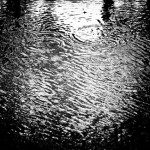 On Friday, September 19, Orbis Books held a book launching party for my new book New York Catholics: Faith, Attitude & the Works! I offer here the remarks I made at that event:
On Friday, September 19, Orbis Books held a book launching party for my new book New York Catholics: Faith, Attitude & the Works! I offer here the remarks I made at that event:
I think the theme of this book might well be summed in the words of journalist Paul Moses: “Who we are contributes to the life of this city.” This happens in numerous ways, one of them being geographical.
In New York City, there’s such a thing as a Catholic topography, ranging from Duffy Square to Dongan Hills. Drive along any highway, cross any bridge, walk through the streets of any of the five boroughs and you’ll see evidence of the difference Catholic men and women have made in the life of this city: through their churches and cathedrals, their parochial schools and universities, their hospitals and charities, even their monasteries. Think too of the numerous streets named after priests and nuns, like Father Cappodano Boulevard in Staten Island or Sister Mary Patrick McCarthy Street in Jackson Heights.
But it’s about more than geography. Think of the people: the women religious who founded the hospitals, schools and orphanages like the Foundling Hospital in Manhattan, still in place since the fall of 1869. Think of others like John Hughes, who founded Fordham, of Isaac Hecker who set out to evangelize the city and the nation, of Dorothy Day who founded the most radical school of evangelical poverty ever seen in this country, of Thomas Merton who reached so many through his books, and Fulton Sheen, who’s still watched today.
Other New York Catholics have made their mark on the larger culture: Little Italy’s Martin Scorsese, Bronx natives Mary Higgins Clark and Regis Philbin, Brooklyn-born Jimmy Fallon. There are also the novelists from Mary Gordon to Peter Quinn to Jimmy Breslin who have captured the stories of the people we call New York Catholics. Think of the movies from Angels with Dirty Faces to On the Waterfront have preserved the New York Catholic experience on film.
Who are the New York Catholics? Well, some are famous and some should be more famous. As Father Jim Martin says, look at the front doors of St. Patrick’s Cathedral, at the saints featured there in bronze. Many others don’t have monuments, but their deeds make up what we might call the “living stones” of the New York Church, through their works and deeds. Think also of the working men and women who literally built this city, think of the famous photo of the men having lunch on the skyscraper beam, as Peter Quinn notes in his book Looking for Jimmy.
In Sister Tesa Fitzgerald’s Queens office there’s a framed picture saying, “God made so many different kinds of people. Why would he allow only one way to serve him?” In this book, while I write about Dorothy Day, Thomas Merton and Fulton Sheen, I chronicle many more as well, like:
- Father Sylvester Malone reaching out to nineteenth century Brooklyn’s new Jewish immigrants, helping the ex-slaves.
- Mother Mary Walsh tending to a dying woman in a New York brothel.
- Mother Theodore Williams and Monsignor Bernard Quinn reaching out to the city’s African-American newcomers.
- A Brooklyn kid, Francis X. Ford, whose life ambition was to be a missionary in China.
- Father Mychal Judge lovingly caring for AIDS victims.
- Monsignor Bryan Karvelis turning his rectory into a home for the homeless.
But this book isn’t just about stuff that happened in the past. It’s about the good things going on right now:
- Sister Margaret McCabe and Sister Tesa Fitzgerald ministering to the incarcerated and their families.
- Father Ray Nobiletti’s heroism at 9/11 tending to the wounded and dying.
- People who work with youth and young adults, like Marilyn Santos and Father Dave Dwyer of Busted Halo.
- New religious communities like the Sisters of Life, who offer a ministry of hope and healing.
- New schools like the Nativity and Cristo Rey Schools.
- Brother Mike Grogan working with gangs in the South Bronx.
And so many more.
New York Catholicism has a special charism: to welcome the newcomer, wherever they may be from. New York Catholics have been doing this as long as there’s been a New York: from the Irish and Germans to the Italians and Polish, from the Vietnamese and Nigerians to the Croatians and Mexicans. St. Patrick’s Cathedral, which took nearly fifty years to complete, is a monument to the immigrants who built it and paid for it with “the pennies of the poor.”
New York Catholics are also engaged in a positive dialogue with the larger culture. As Tony Rossi of the Christophers says, “If we don’t engage the culture, we really don’t have the right to complain about it.” Think of the work done on Sirius’s Catholic Channel, by the Christophers to promote the positive things in today’s media, of the Brooklyn Diocese’s NET on television. New York is also home to some of the finest Catholic journalism in the country: Commonweal and America, Catholic New York and the Brooklyn Tablet, as well as being to one of the most successful Catholic blogs in the world, The Deacon’s Bench.
There’s an excitement about being a Catholic in New York. As Father Jim Martin says, “they don’t call it New York for nothing.” There’s an energy to New York Catholic life that doesn’t exist in the same degree elsewhere. But the stories of faith, hope and love that I try to chronicle here have a universal applicability, whether you’re from Little Rock or Seattle, Miami or L.A.
Maybe that’s because our greatest contribution to this city is hope, hope for living. We offer hope, by who we are, by what we do and by how we live, by how we make a difference. As my friend Sister Mary Lanning aptly notes: “People have a right to look to us for hope.” Maybe that’s the real message of this book, the difference that Catholics make in the life of this city and this Church.
In short, this was a book I needed to write. And I would have been really disappointed if I hadn’t.










